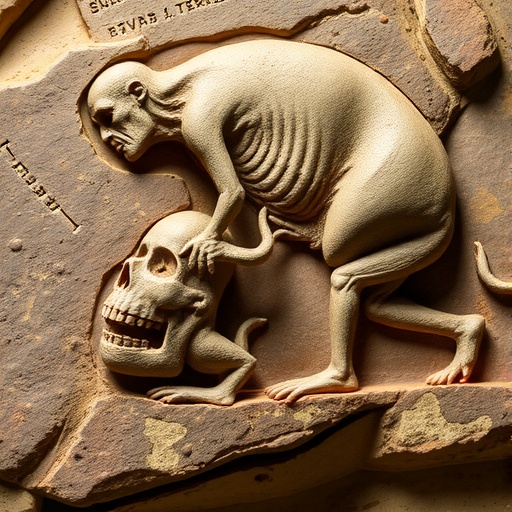A groundbreaking study conducted by anthropologist Brian Villmoare and an international team of researchers has unveiled compelling evidence that challenges long-held assumptions about the linear course of human evolution. The findings, published in the prestigious journal Nature, reveal that the evolutionary pathways of early hominins resemble a complex branching tree rather than a simple straight line. This paradigm-shifting discovery centers around new fossil finds at the Ledi-Geraru research site in Ethiopia, shedding light on the coexistence of multiple hominin species during a pivotal moment nearly three million years ago.
The Ledi-Geraru site, a region of extraordinary paleoanthropological significance, has yielded thirteen fossilized teeth that intricately map the overlap between some of the earliest members of the genus Homo and a new, previously unidentified species of Australopithecus. These fossils date back between 2.6 and 2.8 million years ago, suggesting a prolonged period during which distinct hominin species inhabited the same ecological niche. This discovery upends the conventional model that modern humans evolved through a sequential replacement of ancestral species without significant temporal overlap.
Among the remarkable fossils unearthed are sets of teeth that signify the presence of a novel Australopithecus species, structurally and morphologically distinct from the well-documented Australopithecus afarensis—the species represented by the iconic “Lucy” fossil from the nearby Hadar site. This temporal and spatial proximity of multiple hominin taxa underscores the complexity of evolutionary dynamics at work during the late Pliocene epoch, where adaptability and ecological pressures drove diversification rather than unidirectional progress.
Dr. Villmoare, associate professor of anthropology at UNLV and lead author of the study, emphasizes the significance of these findings in reframing our understanding of human evolution. He articulates that the simplistic notion of a steady, linear march from primitive ape-like ancestors to modern Homo sapiens is obsolete. Instead, the fossil evidence supports a multifurcated evolutionary process where hominin lineages radiated into a range of morphological and behavioral adaptations, each occupying diverse ecological niches amidst fluctuating paleoclimatic conditions.
The research team contextualizes these evolutionary intricacies within the environmental backdrop of East Africa’s drying climate during this period. As the habitat shifted toward more open and arid landscapes, natural selection appears to have favored varied survival strategies, precipitating an experimental phase in hominin morphologies and behaviors. This adaptive radiation could explain the overlapping existence of multiple hominin species, some exhibiting more ape-like traits while others displayed early characteristics aligning with the genus Homo.
These revelations bear significant implications not only for paleoanthropology but also for broader evolutionary biology. The fossil record at Ledi-Geraru exemplifies a pattern observed universally across the tree of life, wherein species diversification involves branching speciation events and coexistence, rather than linear succession. Thus, human evolution aligns with broader biological principles observed across other taxa, reinforcing the notion of evolutionary complexity and mosaicism.
One of the most compelling aspects of the Ledi-Geraru discoveries is the validation of earlier work that identified the oldest known Homo specimen, a jawbone dated at approximately 2.8 million years old, also from this site. The newly reported teeth fossils augment this lineage by providing additional anatomical data points that help delineate the morphological boundaries between Australopithecus and Homo. Despite this progress, substantial gaps remain in comprehensively characterizing the emergence and divergence of early Homo, underscoring the necessity of continued fossil excavation and analysis.
The morphological distinctions found in the fossilized dentition contribute critical insights into dietary adaptations, developmental biology, and phylogenetic relationships among early hominins. Dental morphology, in particular, serves as a diagnostic tool for unraveling evolutionary trajectories, as teeth preserve a wealth of information about genetics, population dynamics, and functional adaptations. The intricate comparisons between the new fossils and known species highlight subtle yet profound evolutionary divergences reflective of broader speciation events.
Despite the breakthrough, the research team maintains a cautious perspective, withholding formal nomenclature for the novel Australopithecus species until more comprehensive fossil evidence becomes available. This prudent approach ensures rigorous scientific validation before integrating the species into the broader hominin taxonomy. As Dr. Villmoare notes, an expanded fossil record is indispensable to clarify the morphological and ecological distinctions that facilitated the coexistence of hominin species during this complex evolutionary juncture.
The Ledi-Geraru research benefits from a collaborative effort that spans multiple institutions, including the Institute of Human Origins at Arizona State University, where Dr. Villmoare has been involved since 2002. This multidisciplinary approach combines field archaeology, paleoenvironmental reconstruction, and advanced morphometric analysis, enhancing the robustness and contextual depth of the findings.
Ultimately, this study marks a significant advance in our understanding of how early human ancestors navigated an era of environmental upheaval and biological experimentation. By revealing a more intricate and bush-like evolutionary pattern, the research invites both scientists and the public to reconsider human origins within a broader framework of diversity, adaptability, and evolutionary branching that reflects the fundamental nature of life’s history.
Subject of Research: New fossil discoveries revealing coexistence of Australopithecus and early Homo species, challenging linear models of human evolution.
Article Title: New discoveries of Australopithecus and Homo from Ledi-Geraru, Ethiopia
News Publication Date: 13-Aug-2025
Web References:
Image Credits: Image courtesy of Brian Villmoare/UNLV
Keywords: Evolution, Homo sapiens, Human evolution, Early humans, Human origins, Anthropology, Teeth, Mandible, Fossils, Fossil records




